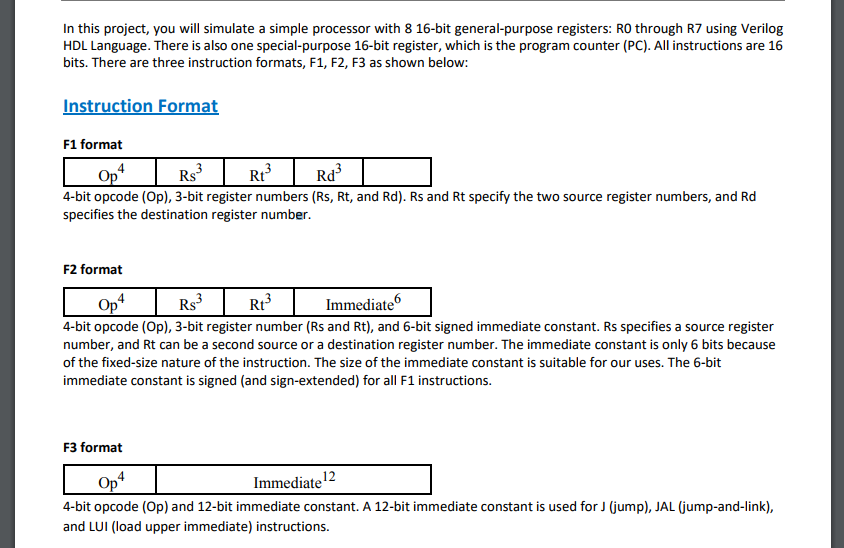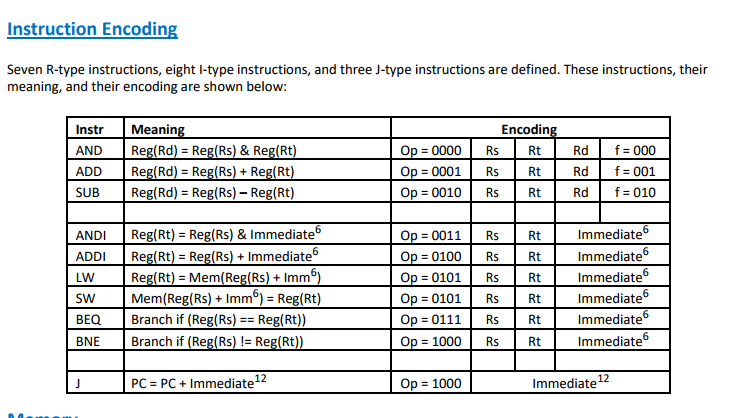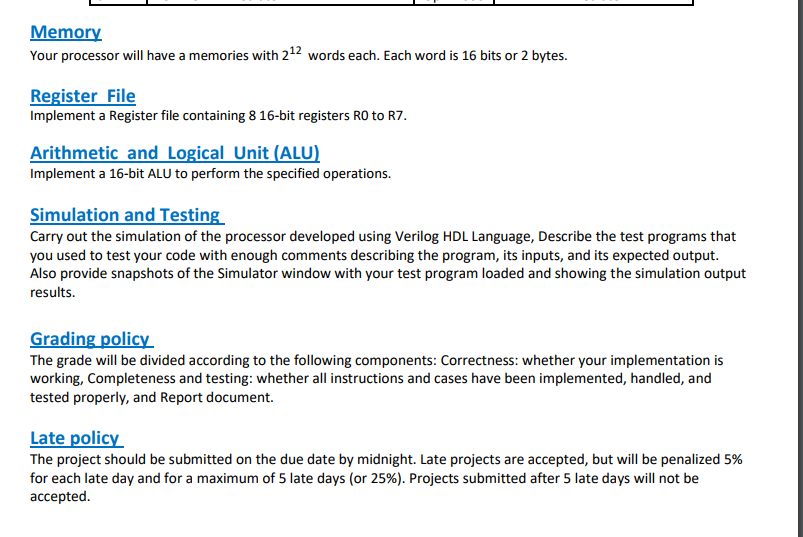


In this project, you will simulate a simple processor with 8 16-bit general-purpose registers: RO through R7 using Verilog HDL Language. There is also one special-purpose 16-bit register, which is the program counter (PC). All instructions are 16 bits. There are three instruction formats, F1, F2, F3 as shown below: Instruc on Format F1 format Rt Rd 4-bit opcode (Op), 3-bit register numbers (Rs, Rt, and Rd). Rs and Rt specify the two source register numbers, and Rd specifies the destination register number F2 format Rs Immediate 4-bit opcode (Op), 3-bit register number (Rs and Rt), and 6-bit signed immediate constant. Rs specifies a source register number, and Rt can be a second source or a destination register number. The immediate constant is only 6 bits because of the fixed-size nature of the instruction. The size of the immediate constant is suitable for our uses. The 6-bit immediate constant is signed (and sign-extended) for all F1 instructions F3 format Immediate 4-bit opcode (Op) and 12-bit immediate constant. A 12-bit immediate constant is used for J (jump), JAL (jump-and-link) and LUI (load upper immediate) instructions. In this project, you will simulate a simple processor with 8 16-bit general-purpose registers: RO through R7 using Verilog HDL Language. There is also one special-purpose 16-bit register, which is the program counter (PC). All instructions are 16 bits. There are three instruction formats, F1, F2, F3 as shown below: Instruc on Format F1 format Rt Rd 4-bit opcode (Op), 3-bit register numbers (Rs, Rt, and Rd). Rs and Rt specify the two source register numbers, and Rd specifies the destination register number F2 format Rs Immediate 4-bit opcode (Op), 3-bit register number (Rs and Rt), and 6-bit signed immediate constant. Rs specifies a source register number, and Rt can be a second source or a destination register number. The immediate constant is only 6 bits because of the fixed-size nature of the instruction. The size of the immediate constant is suitable for our uses. The 6-bit immediate constant is signed (and sign-extended) for all F1 instructions F3 format Immediate 4-bit opcode (Op) and 12-bit immediate constant. A 12-bit immediate constant is used for J (jump), JAL (jump-and-link) and LUI (load upper immediate) instructions









